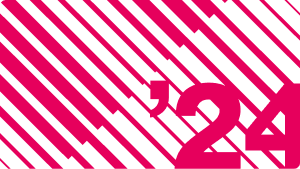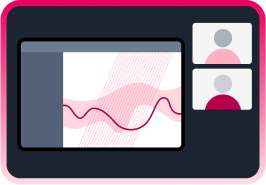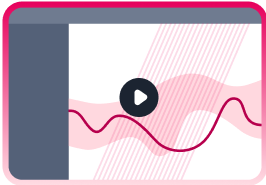Conversion Rate Optimization UX: How CRO and UX Go Hand in Hand

What is conversion rate optimization UX?
Conversion Rate Optimization UX is an interdisciplinary field that focuses on how conversion rate optimization (CRO) and user experience (UX) design work together to drive conversion rates and increase your business’s ROI.
Even though CRO and UX design are fundamentally different disciplines, they share a common goal: help users get things done with the least amount of effort possible.
What is conversion rate optimization (CRO)?
Conversion rate optimization (CRO) is the practice of increasing the likelihood that website or application visitors will accomplish a desired action, such as adding an item to a cart or making a purchase.
What is user experience (UX) design?
User experience design, on the other hand, is all about the interaction between the website and user, or how it feels to use a website. The best UX designs are intuitive and enjoyable to use. The best UX designers increase user satisfaction by enhancing usability, accessibility, and pleasure.
Using Conversion Rate Optimization and UX design to enhance your digital products
Customers encounter friction when they discover something they didn’t expect, such as a dead link or a graphic that looks like a button but isn’t. CRO teams help to identify moments of friction, while UX designers come up with the strategies to address the problem.
Problems, bugs, or glitches in the UX often lead to an increase in cart abandonment rate and decreases in micro conversion rates, or the percentage of users who are progressing towards a valuable conversion on your website or application. Micro conversions include smaller steps, like navigating from the landing page to product pages.
With this in mind, it’s best to address the UX problems that are having the greatest negative impact on conversion rate, even if other UX errors seem more glaring.
To address these trouble spots, CRO and UX teams work together by employing techniques such as A/B tests, heatmaps, session replay, and visitor analytics, as well as user surveys, eye-tracking studies, and customer feedback.
In particular, both teams benefit from using form analytics, which is the process of monitoring how users interact with the website’s form fields.
Data-driven design methods help teams to align on priorities and ensure UX consistency across the business’s digital products.
By joining forces, CRO and UX teams create persuasive, ethical designs that also improve a business’s bottom line.
Here are some of our top tips for how uniting conversion rate optimization techniques with UX design principles can help your company to build standout digital products.
Study the customer journey
Both CRO and UX teams must recognize user journey paths, and especially any and all conversion funnels. By paying close attention to micro conversion rates, UX teams discover crucial exit points (that is, where users left the website). Afterwards, they are free to re-design the areas or features that prompted users to leave the site.
In general, UX designers that specialize in CRO perform better user behavior research, a crucial part of validating design ideas.
Declutter your website’s pages
When it comes to landing pages, less is more.
You don’t want to encourage customers to click haphazardly, so it’s best that each landing page offers a logical progression with visual breaks. Customers should have no problem deducing how to navigate through a website.
Your most important content and CTAs should appear right above or below the part of the webpage that you don’t have to scroll to see. This area is referred to as the webpage’s fold.
Be sure that important CTAs are not buried in information dumps or next to unnecessary buttons. After all, there’s nothing worse for user experience than accidentally hitting the wrong buttons.
Also, slow website performance negatively impacts conversion rates as well as organic search traffic and search engine ranking. That said, it’s best to avoid cluttering your landing page with large images or unnecessarily long video clips. (Did you know that most users abandon sites that take over 3 seconds to load?)
Tip: Take advantage of animations and GIFs. Moving images allow your team to showcase multiple products, or multiple angles of a single product, without forcing users to navigate from one element to another. That way, people don’t need to unnecessarily click.
Make sure your website is readable
Nothing deters readers from your website more than indecipherable fonts and poorly arranged images.
So be sure to select easy-to-read designs, images, and fonts.
Your font size should be larger than you think—aim for 18 points or bigger.
Some fonts are seen as authoritative, while others strike users as official, objective, or modern. Choose the one that best suits your brand’s voice. If you’re going for something serious, Comic Sans might not be the best choice for your font..
As you start thinking about your website’s visual hierarchy, make sure that the most important messages and CTAs are attached to the biggest elements. Your buttons should be self-explanatory.
And don’t forget about your color choices! Dark colors tend to carry more weight, though bright colors like orange can help draw attention to important details.
Stick to familiar designs
UX designers are tasked with creating a compelling user experience without compromising on conversion rates.
When people finally land on a website, they experience a gut reaction almost immediately. Most users are attracted to websites that demonstrate low visual complexity and high prototypicality. In other words, users tend to like websites that look like other websites, especially those that avoid clumsy designs and awkward user interfaces.
For instance, most people are accustomed to seeing e-commerce websites that resemble Amazon and other retail giants. Most companies stick to the patterns that work, rather than reinvent the wheel,
It’s not surprising that United, American, Delta, and most other airlines allow travelers to start booking their flights from the get go, right on the landing page itself.
While innovative, unconventional layouts might excite some users, especially design nerds like me, it’s usually best to embrace clarity and ease-of-use. Otherwise you run the risk of confusing users and lowering your website’s conversion rate.
In addition, UX designers should collaborate with UX writers and content strategists to tweak a website’s copy to increase conversions.
Short, simple messages tend to do the trick.
How Quantum Metric can help to align CRO and UX design teams and drive conversion rates
With Quantum Metric, the industry leader in Continuous Product Design (CPD), CRO and design teams can access user analytics, session replay technology, end user segmentation tools, and data visualization, all in one place. This means that CRO and UX teams have access to a single version of truth that is easy to understand, quantified, and based on actual user experience.
CRO and UX design teams use Quantum Metric to quantify the impact of design iterations and gather customer feedback from the silent majority. With Quantum, your team is equipped with the necessary tools to correlate users’ engagement to conversions.
Thanks to Quantum’s anomaly detection technology, teams can monitor the impact of every new version release. This means that CRO and UX teams can start optimizing the customer journey right from launch day.
Companies have used Quantum Metric to detect conversion-blocking API errors, rescue e-commerce customers at points of friction, uncover usability issues that impacted conversions, and much more.
If your team is interested in taking the Quantum leap, there’s no need to wait.
Request a live demo today.







